Apty vs ProductFruits vs Userpilot: Which is Best for Your SaaS?
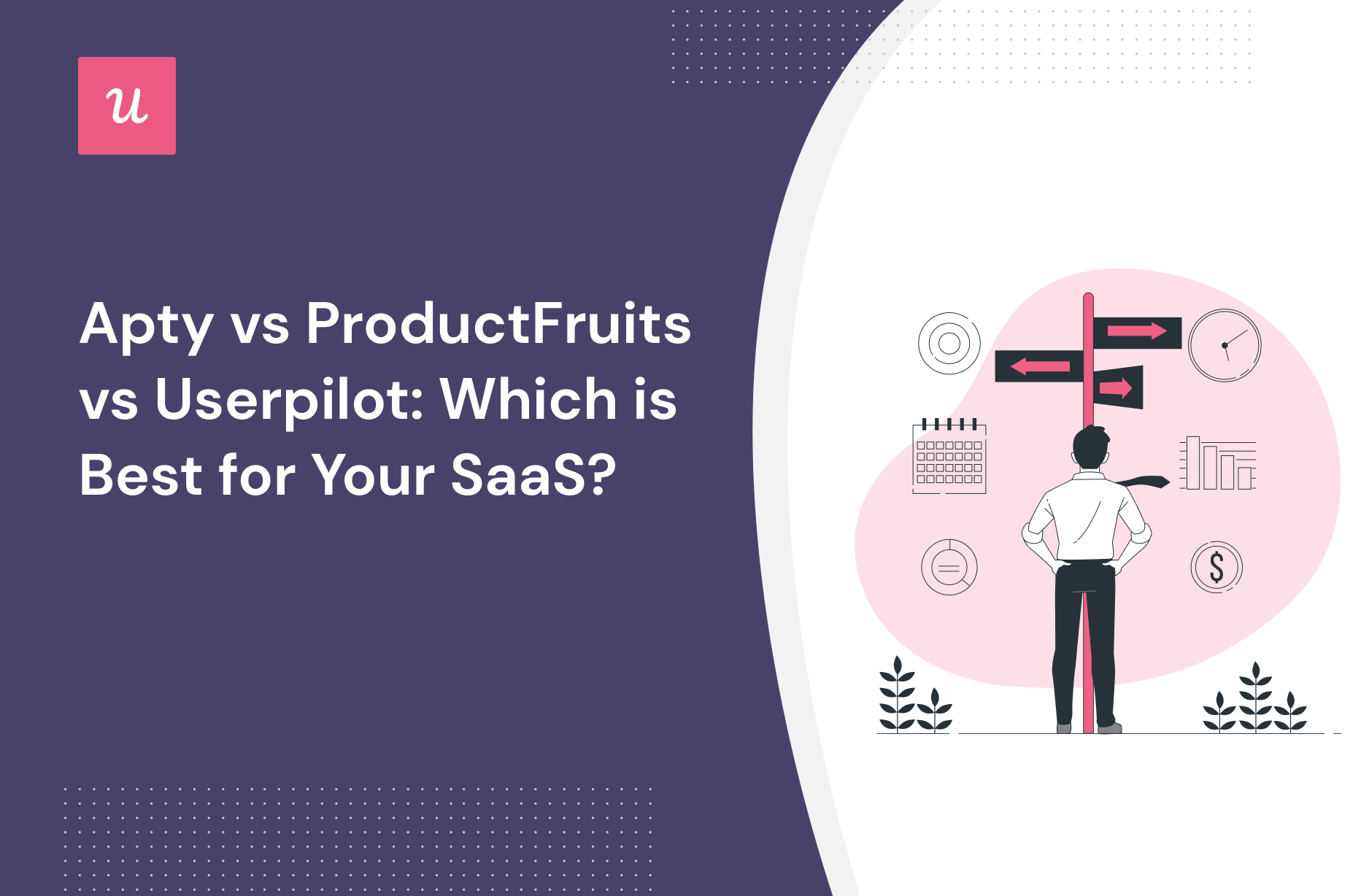
Seems like you’re comparing Apty vs ProductFruits vs Userpilot. Choosing the right product growth (or digital adoption) platform for your SaaS is no mean feat. We know that review sites aren’t always super-helpful.
So we decided to write a more in-depth comparison of the three tools. Whether you’re looking mainly to improve your user onboarding or product analytics, collect user feedback, or NPS – you’ll find the answer if Apty, ProductFruits, or Userpilot is the best fit for you here!
Let’s dig in!
TL;DR
- Apty’s digital adoption platform aims to make employee adoption a snap with engaging onboarding flows and product tours. It does this with a mix of on-screen guidance, interactive walkthroughs, and in-app messaging.
- Product Fruits is one of the cheapest user onboarding tools on the market, so it may be a go-to tool to build product tours for really small startups on a budget under $100. Even though it seems to do a lot of the things that more sophisticated tools like Userpilot or Appcues do (based on its pricing table, at least) – it doesn’t have any more sophisticated analytics, the segmentation options are very limited, there are no A/B testing, the element detection algorithm is wobbly, and it doesn’t have real-time event-based triggering. So it’s really an MVP tool for a simple product tour.
- Userpilot is a powerful product adoption and user onboarding platform. It helps product teams create personalized user experiences through product tours, onboarding checklists, and feature announcements. Userpilot’s code-free solution enables easy implementation, allowing businesses to engage and guide their users effectively. Book a demo to learn more!
![]()
Comparing Apty vs ProductFruits vs Userpilot? Try the best one!

What is Apty?
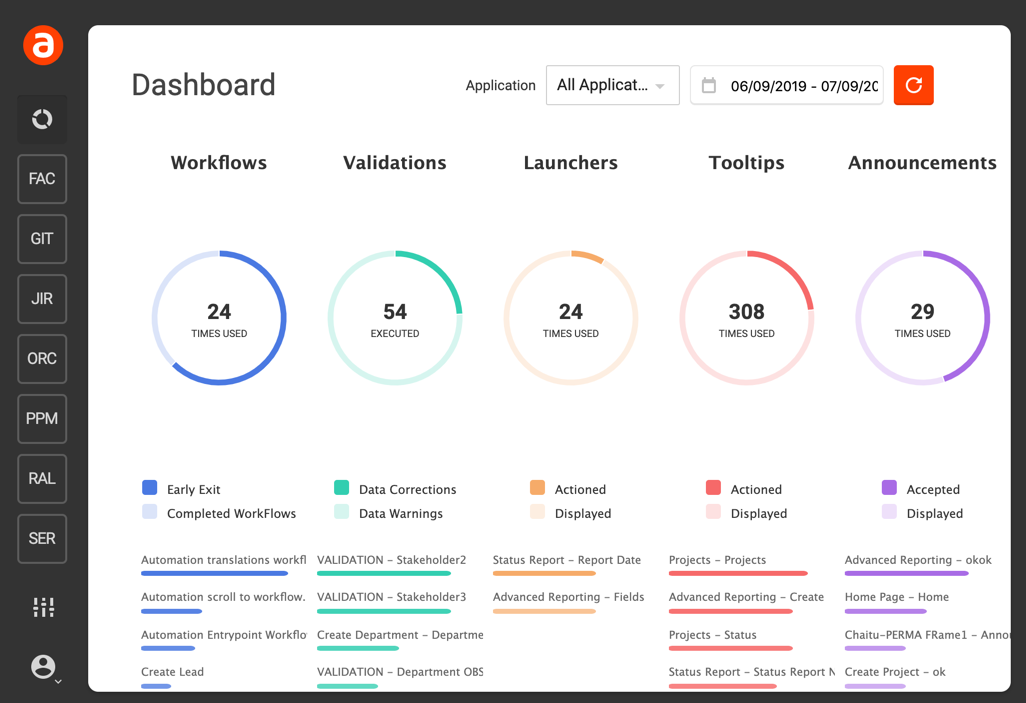
Apty’s digital adoption platform aims to make employee adoption a snap with engaging onboarding flows and product tours. It does this with a mix of on-screen guidance, interactive walkthroughs, and in-app messaging.
This platform is great for engaging your employees on your platform to increase product adoption, feature adoption, and improve the experience.
What is Apty best for?
Typically, SaaS Product Managers consider Apty for the following reasons: they want to improve their user onboarding, they need product adoption, and would also be able to measure their user feedback. How does Apty perform when it comes to these top-three use cases? Let’s examine it all, and then compare it to the other tools we’re discussing in this post.
Apty for user onboarding
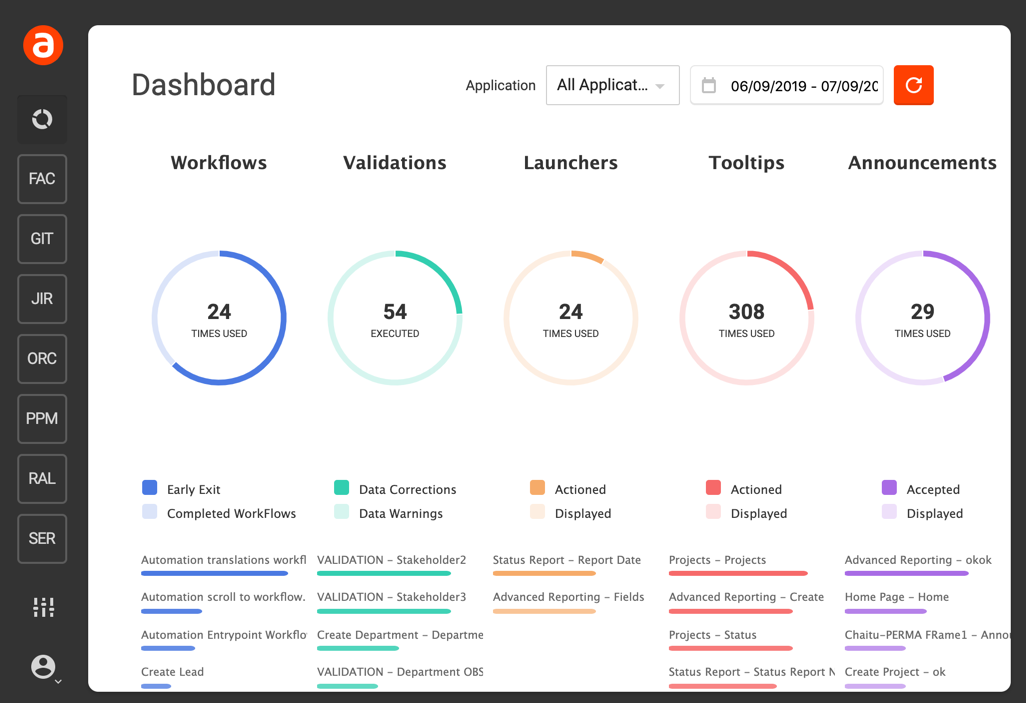
Apty for user onboarding
Here’s how Apty can help with employee onboarding:
- Combine tooltips and create interactive walkthroughs to shorten the learning curve and, subsequently the time to value.
- Create and publish onboarding flow, product tours, and feature walkthroughs code-free.
- Push in-app notifications to remind users to complete their training.
- Apty’s analytics lets you create training and onboarding materials that meet the needs of your customers and employees.
Apty for product adoption
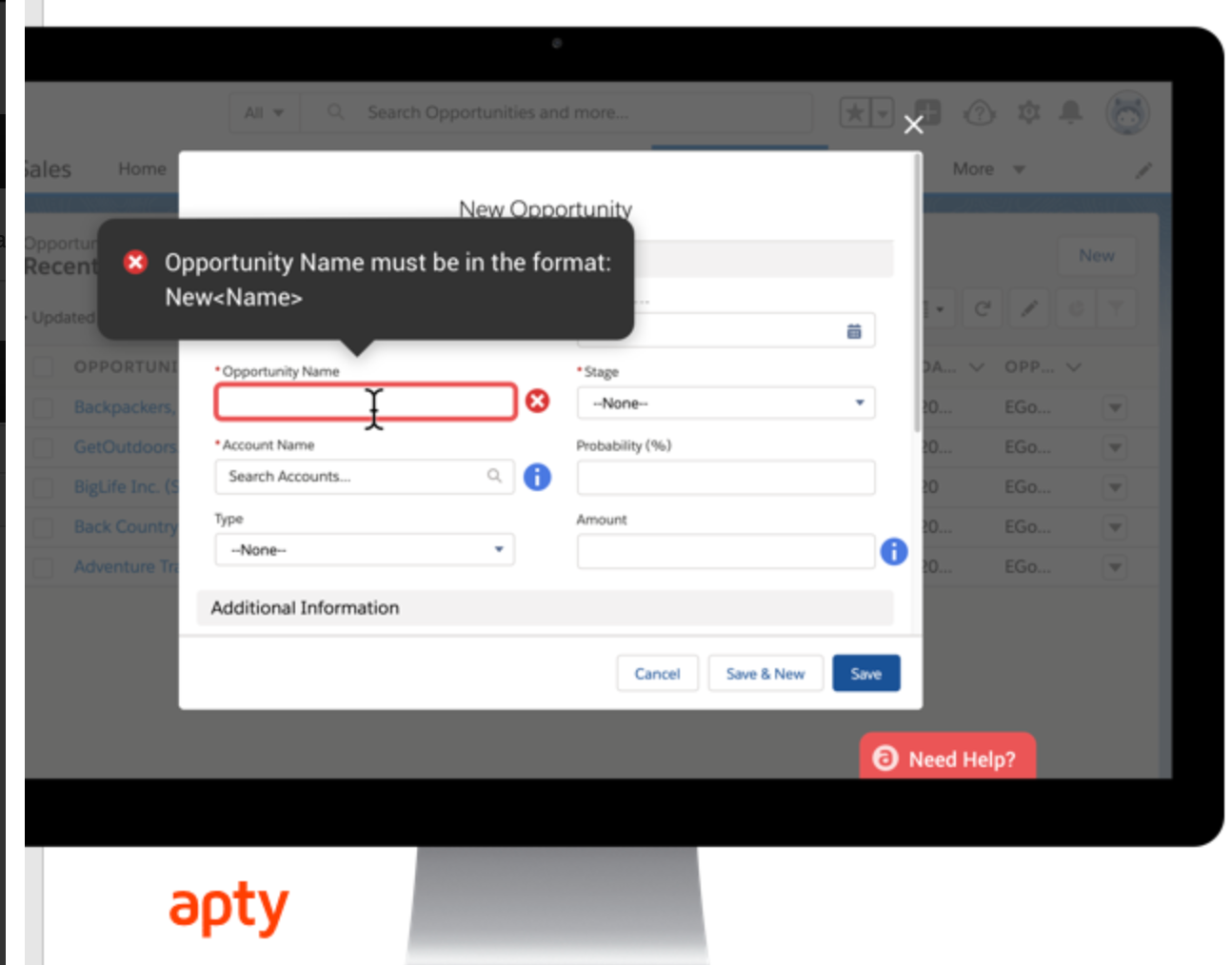
Apty for product adoption
Here’s how Apty can help with employee product adoption:
- Apty allows you to create interactive walkthroughs, onboarding flows, and product tours to help new employees discover new features and adopt your platform.
- It lets you segment your users by feature usage and then target the experiences only to the ones that haven’t adopted a certain area of your product yet.
- Apty allows you to use tooltips to engage users directly in-app.
Apty for user feedback
Apty allows you to enable timely employee feedback so you can be contextual and improve the overall experience. The only thing about using Apty to collect feedback is that you can only embed surveys from other apps into the announcements.
Here is what Apty’s feedback feature offers:
- Embed surveys (Google Forms, Survey Monkey, etc) to in-app announcements to collect feedback.
- See the average ratings and the number of users who completed the surveys.
![]()
There is a better tool for your SaaS than Apty!

What is ProductFruits?
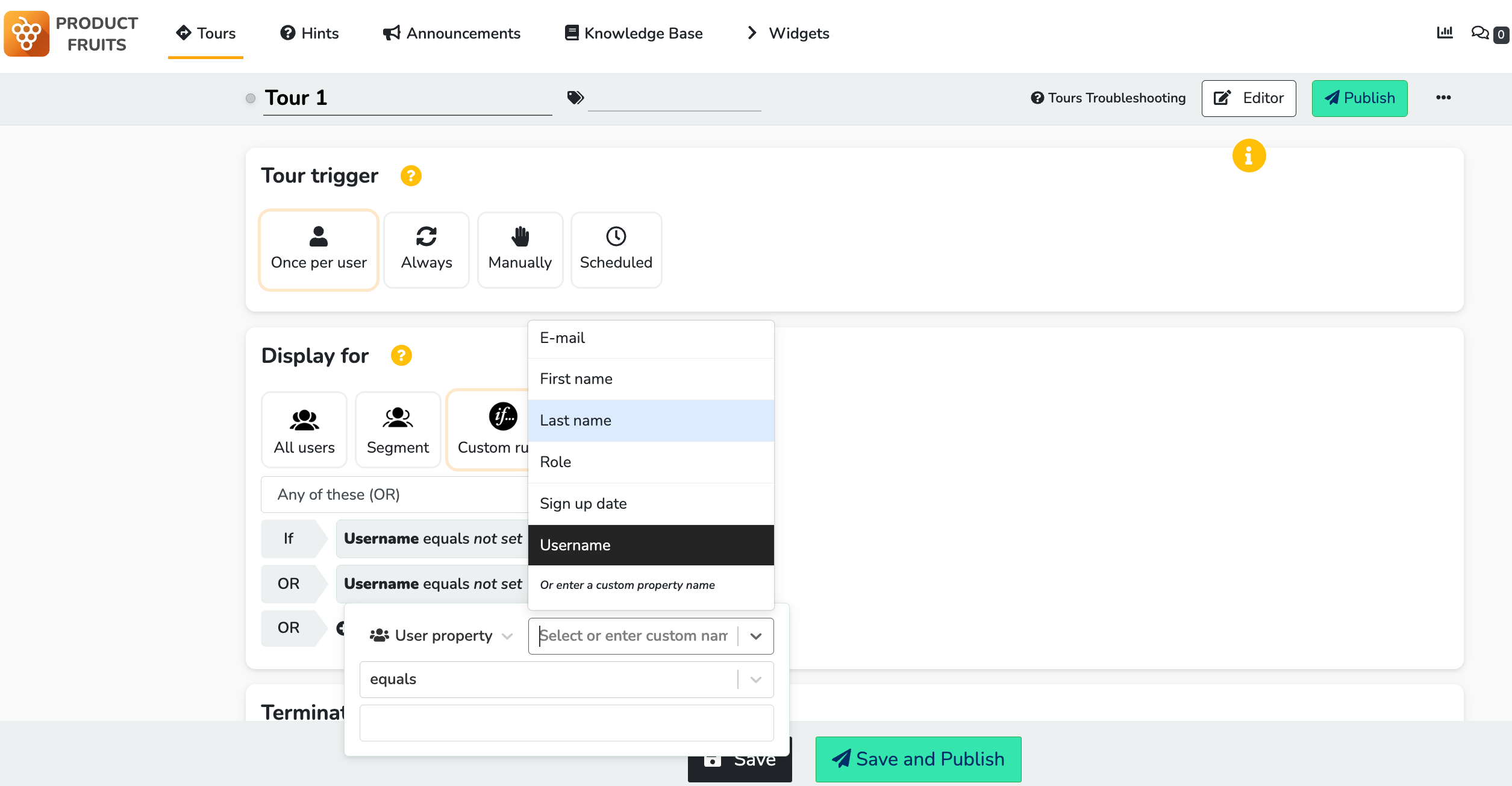
Product Fruits is one of the cheapest user onboarding tools on the market, so it may be a go-to tool to build product tours for really small startups on a budget under $100. Even though it seems to do a lot of the things that more sophisticated tools like Userpilot or Appcues do (based on its pricing table, at least) – it doesn’t have any more sophisticated analytics, the segmentation options are very limited, there are no A/B testing, the element detection algorithm is wobbly, and it doesn’t have real-time event-based triggering. So it’s really an MVP tool for a simple product tour.
What is ProductFruits best for?
Similar as with Apty, ProductFruits is typically considered for user onboarding, product adoption, and user feedback. Let’s examine ProductFruits for these use cases before we compare it to Userpilot.
ProductFruits for user onboarding
While Product Fruits may not be the most advanced tool on the market, it does offer some useful features for user onboarding. With options for:
- Product tours.
- Checklists.
- Hints.
- In-app announcements.
- Feedback and NPS surveys.
- A help center button.
This platform covers the basics of what you need for a successful onboarding experience. Plus, it’s an affordable option for small startups on a budget. However, it’s worth noting that Product Fruits has its downsides, such as only offering basic linear tours, clunky UX, and limited reporting for the help center widget. Nonetheless, if you’re looking for a cost-effective solution for user adoption, Product Fruits may be worth considering.
ProductFruits for product adoption
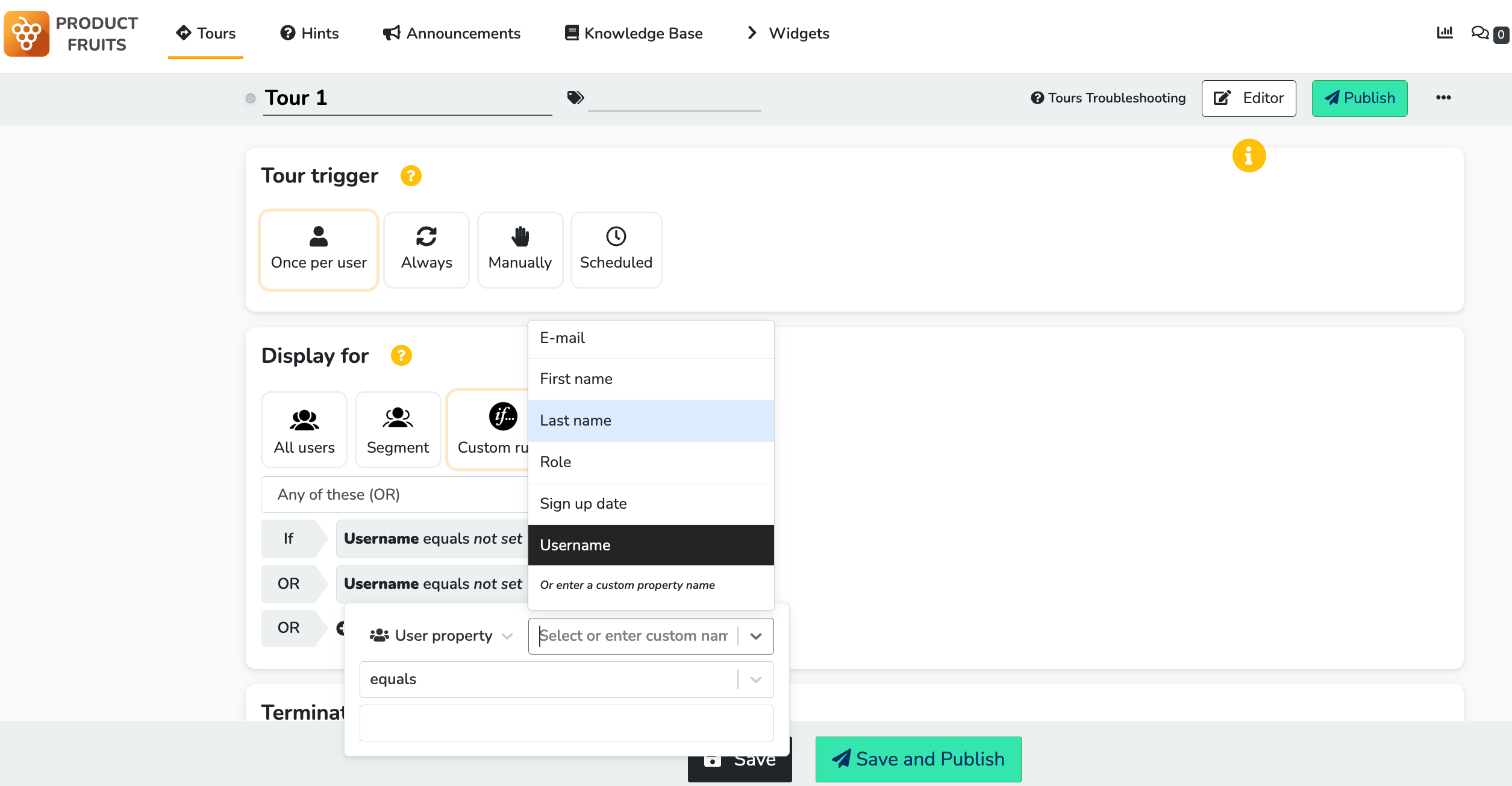
ProductFruits for product adoption
Product Fruits as a user adoption tool offers basic features to help you create a simple onboarding experience for your users. Its core features include product tours, checklists, hints, in-app announcements, feedback and NPS surveys, and a help center button. However, the platform has its limitations, such as only offering basic linear tours and having a clunky UX that can be hard to use (esp the element selection).
The lack of certain UI patterns (hotspots, spotlights) can make product adoption via secondary onboarding more challenging. Moreover, the segmentation options are limited to user attributes only, so unlike with tools like e.g. Userpilot, you cannot display product adoption experiences based on what the user has actually done inside your app (= tracked events).
ProductFruits for user feedback
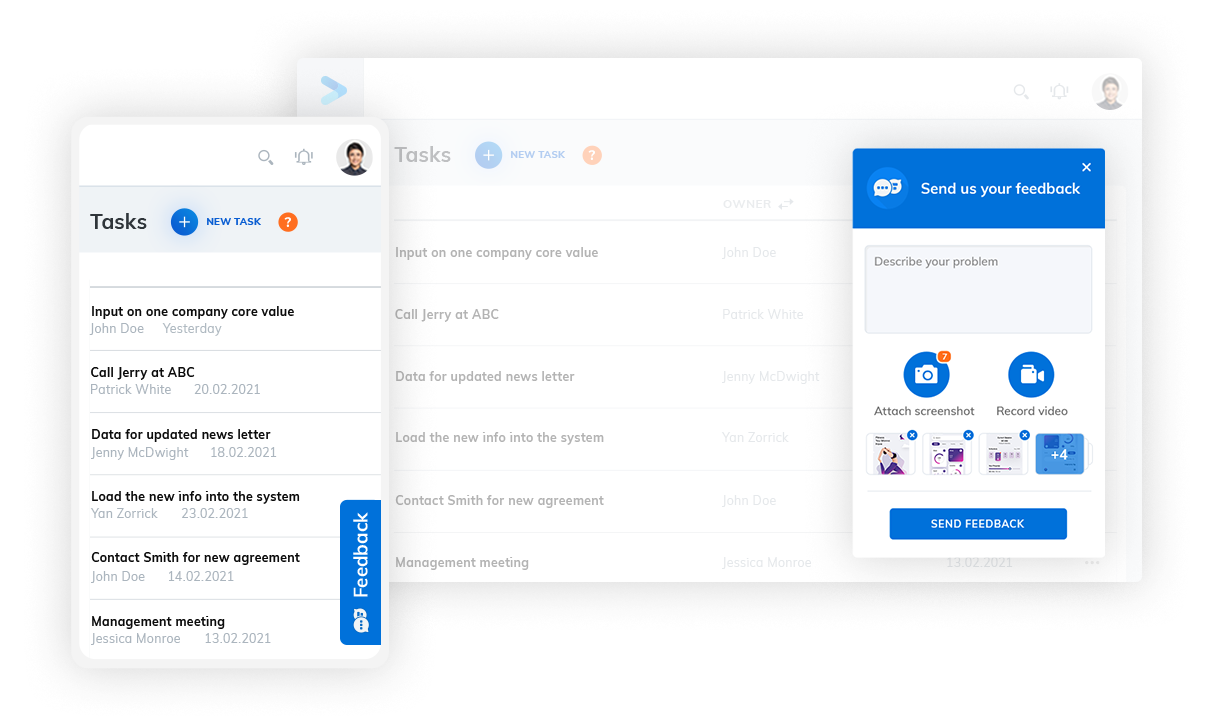
ProductFruits for user feedback
Product Fruits surveys are simple but easy to implement:
- In-product feedback and surveys without any coding required.
- Adoption Meter to track user moods and understand how users feel about your product or feature.
- Targeting as granular as you need with advanced segmentation and behavioral triggers.
- Easy setup with hassle-free deployment and no impact on app loading or response times.
- Very limited analytics.
- No AI-based user sentiment analytics.
![]()
Try a better tool for your SaaS than ProductFruits!

What is Userpilot?

Userpilot is a comprehensive digital adoption platform (DAP). It enables product teams to track product usage and user behavior to guide product development and optimize the user experience.
In addition, it allows them to gather user feedback and design personalized onboarding experiences to drive product adoption. All of this is possible without coding.
What is Userpilot best for?
Userpilot is used for similar use cases as ProductFruits and Apty. Let’s see how Userpilot compares to the tools we discussed before it comes to user onboarding, product adoption, and user feedback.
Userpilot for user onboarding
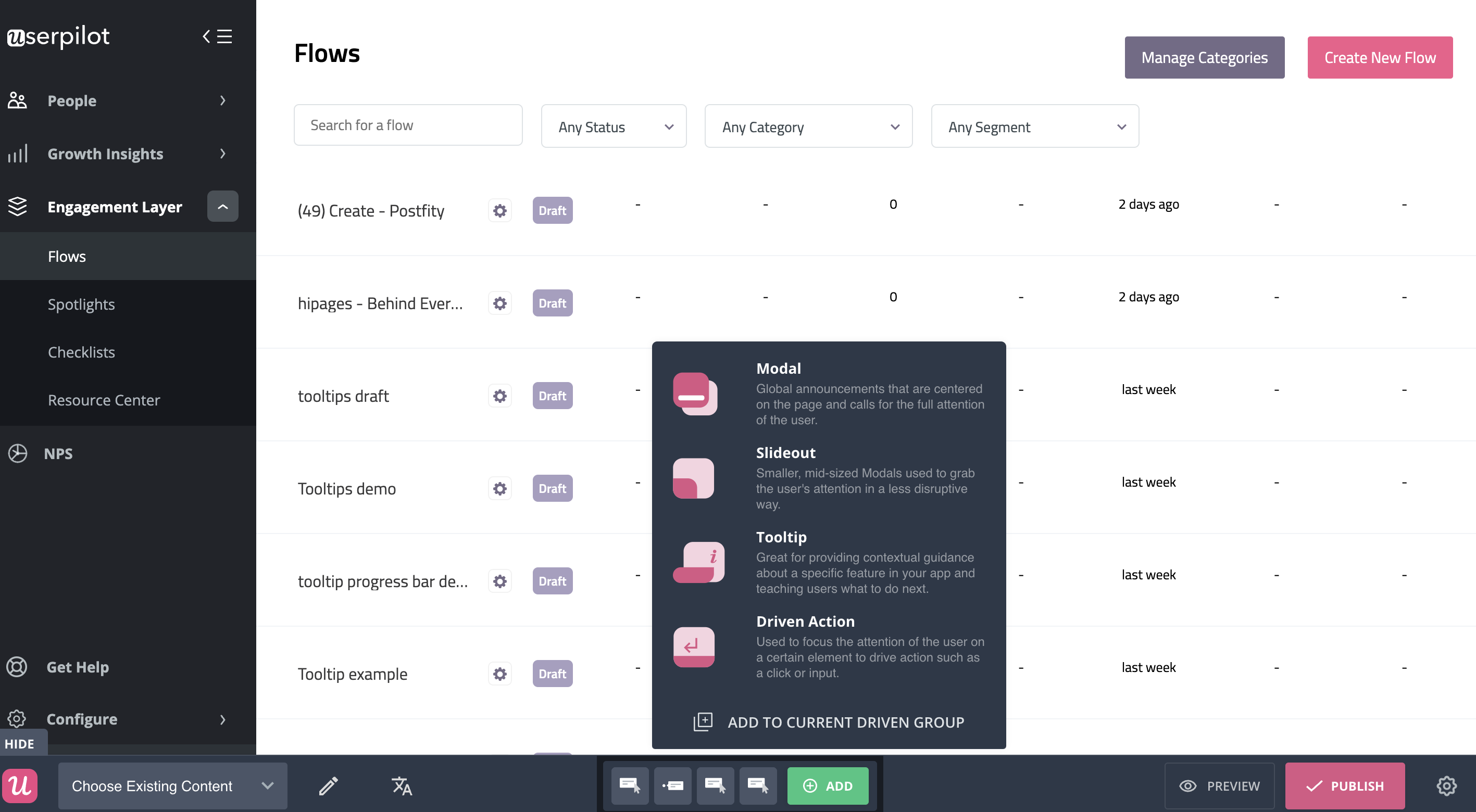
Userpilot for user onboarding
Userpilot was built specifically for SaaS product teams that want to improve their user onboarding experience and boost user activation.
You can build a huge variety of user onboarding experiences and in-app guidance flows without needing to code.
Here’s what you’ll get when you start using Userpilot:
- Forget about coding in-app experiences: Userpilot is a no-code solution and only requires your dev to install a line of javascript inside your app and for you to download a Chrome extension that opens up the visual builder.
- Build in-app flows using the largest range of UI patterns (modals, slideouts, tooltips, hotspots, banners) and in-app onboarding experiences (checklists, micro surveys, NPS surveys, in-app resource center).
- Get access to a built-in NPS tool for collecting and analyzing user sentiment so you can improve your onboarding process based on real data.
- Create and track combinations of in-app events like clicks, hovers, and form fills, and then analyze all these interactions under your own custom events, which can be built without code or API calls.
- Use advanced product analytics and in-app flows analytics to identify where users need help and create granular user segments to trigger in-app experiences contextually (segment based on user identification data, in-app engagement, custom events, clicks, hovers, form fills, user feedback responses, NPS scores and more).
- Enhance the onboarding experience with in-app help by launching a Resource Center directly inside your app. Add in-app guides, and video tutorials, and give users access to search the knowledge base or reach out to support. Self-service has never been easier.
The best user onboarding is contextual and it happens right where the users need it, inside your app. There isn’t a better user onboarding tool out there that offers more value for the money than Userpilot.
Schedule a demo with our team and get ready to build the best onboarding experiences your users have seen.
Userpilot for product adoption
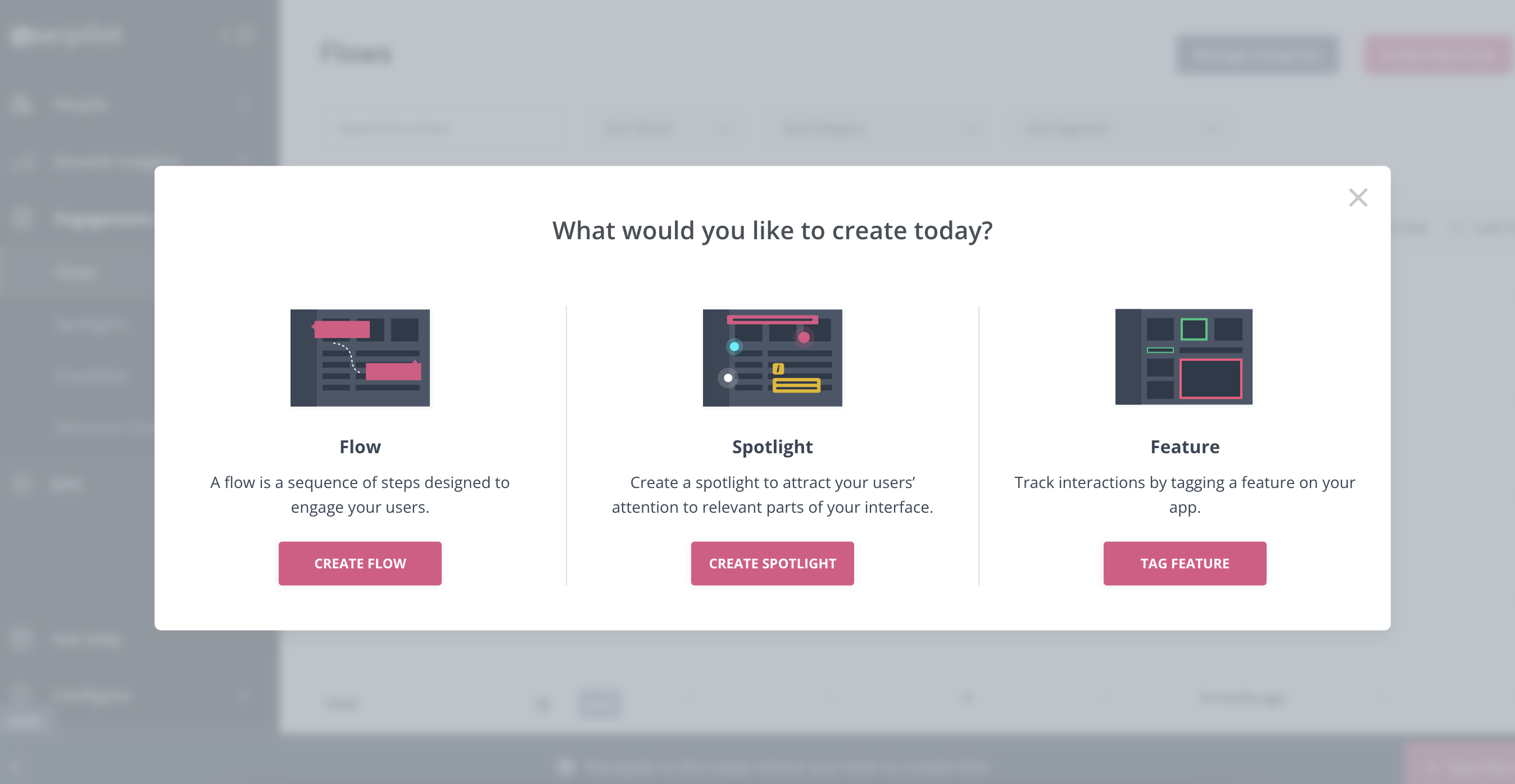
Userpilot for product adoption
Product adoption describes the process of getting users to the point where they are experiencing value from your product.
Userpilot is a powerful product adoption platform that enables you to quickly build personalized and contextual in-app experiences targeted to different user experiences – all without writing a line of code.
It’s a great option for enterprise users too since it’s SOC 2 Type II certified and offers robust features for large-scale usage.
Here are some of Userpilot’s product adoption features that you may find helpful:
- A broad range of UI patterns to build fully customizable, contextual, and interactive in-app flows: modals, slideouts, tooltips, hotspots, driven actions, banners, and more. And – most importantly – you are not limited by plan when it comes to how many UI patterns or designs you can build.
- Advanced in-app checklists with built-in gamification elements like progress bars or ”automatically marked complete” tasks: checklists also come with analytics so you can track who is interacting with them and how.
- Fully interactive walkthroughs walk users through engaging and adopting specific features of your app.
- The self-service in-app resource center lets users search your knowledge base directly inside the app, access chat, and support but also launch guides and tutorials when they get stuck.
- User feedback tools allow you to collect insights to improve the product and the user experience, thus leading to a higher product adoption rate. You can also collect NPS data and tag responses to uncover patterns into what makes users stick, or build micro surveys for more granular data. Then you can use all the feedback collected to build user segments based on the answers and personalize the path to higher product adoption for each segment.
Want to see Userpilot in action? Get a demo and improve product adoption with contextual and personalized in-app flows that actually help users.
Userpilot for user feedback
There are two types of feedback you should be focusing on collecting to better understand the health of your product and users.
First, you have user sentiment which looks at user satisfaction and effort scores or loyalty (using NPS surveys). Then you may also want to collect feedback on the functionality of the product or specific features.
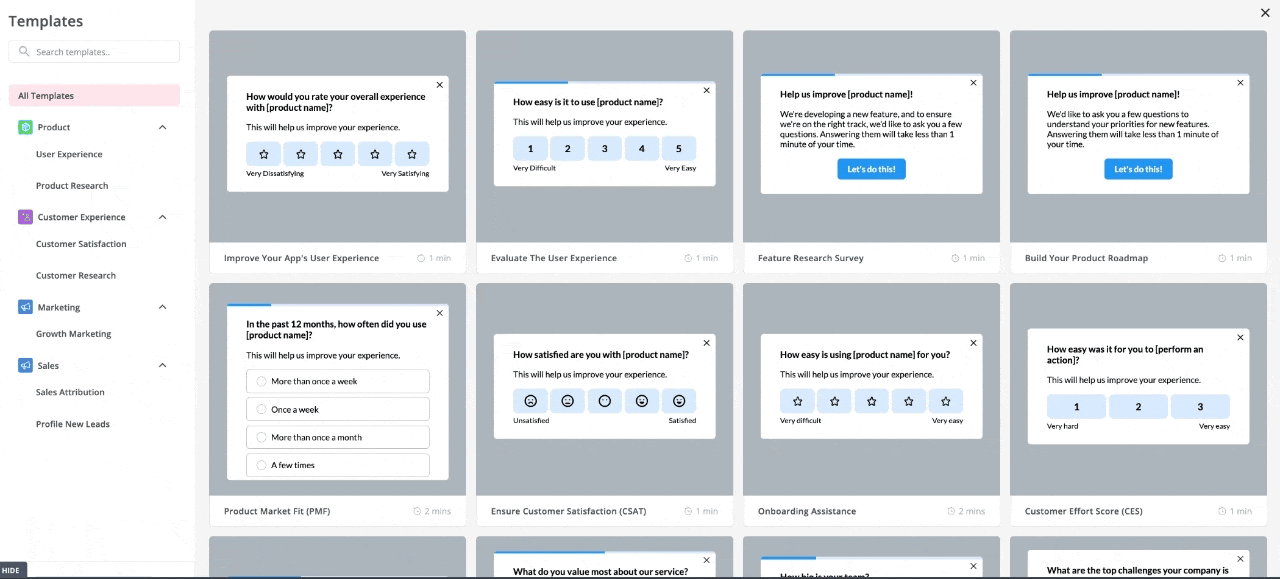
Userpilot for user feedback
You can do all these with Userpilot. In short, you can:
- Collect and track (NPS) in-app with a built-in NPS widget that allows you to fully customize the survey look and feel, and set the trigger frequency and specific targeting.
- Analyze NPS scores, tag responses, and use the data to create specific user segments.
- Build and trigger in-app micro surveys like the classic PMF survey, or similar ones and mix multi-choice and open-ended types of questions to collect specific insights.
- Be in charge of who gets which survey type and when with advanced segmentation capabilities, and of course, you can use the answers to segment your audience.
The advantage of using Userpilot for collecting feedback over other survey tools is that you can better control who sees the surveys but also you can instantly use the data collected to segment your user base and trigger the right experience for them.
For instance, if your users give you a low NPS score because they think you’re missing a critical feature (that you actually have already), you can push an interactive walkthrough guiding them to find and explore this feature.
![]()
Tired of bad digital adoption tools? Try Userpilot for your SaaS!

Which tool should you choose?
As you can see, both Apty, ProductFruits, and Userpilot cater to most of the use cases Product Managers typically look for in their SaaS companies. There are some differences between the tools when it comes to how those use cases are executed in each, of course.
So if you’re still on the fence – there are two more factors that can make a difference for you – the tools’ pricing, and its reviews. Let’s have a look at both below!
Apty pricing
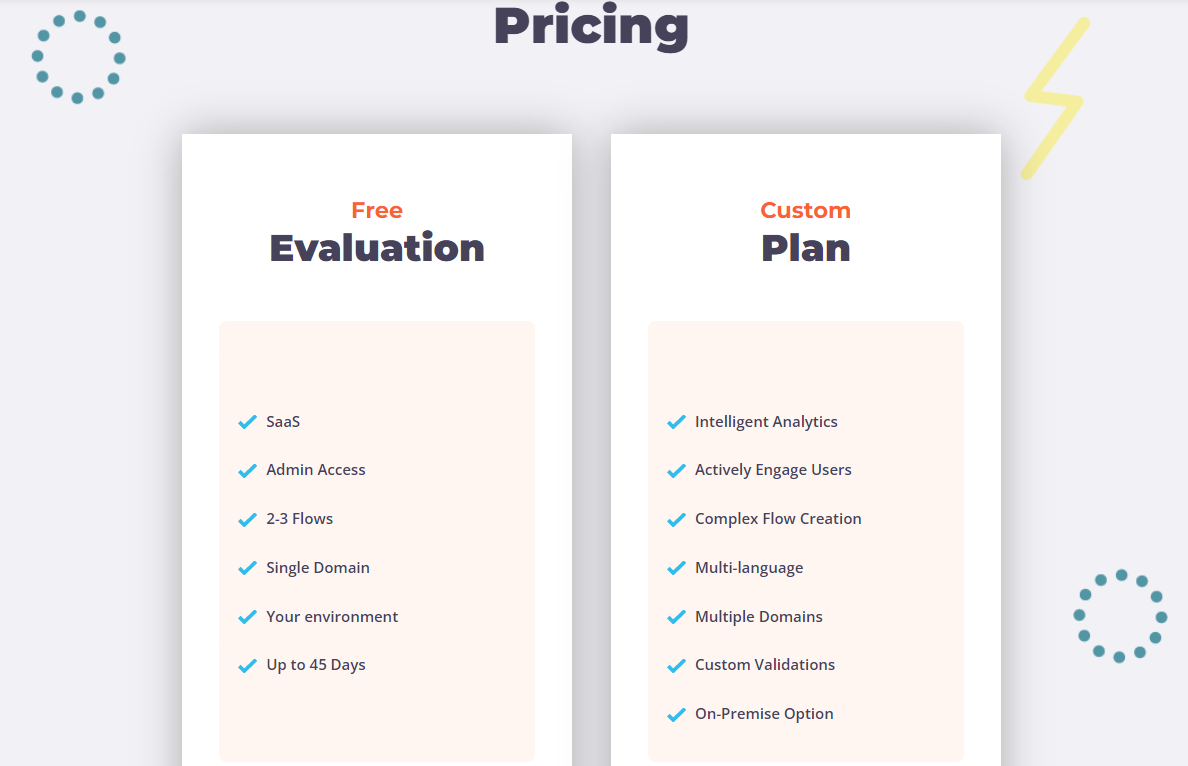
Apty pricing
Apty offers a free trial and custom quotes based on business needs.
- Free trial: Up to 45 days, includes 2-3 flows, works on a single domain.
- Custom pricing: Intelligent analytics, complex flow creation, multilingual support, available on multiple domains.
ProductFruits pricing
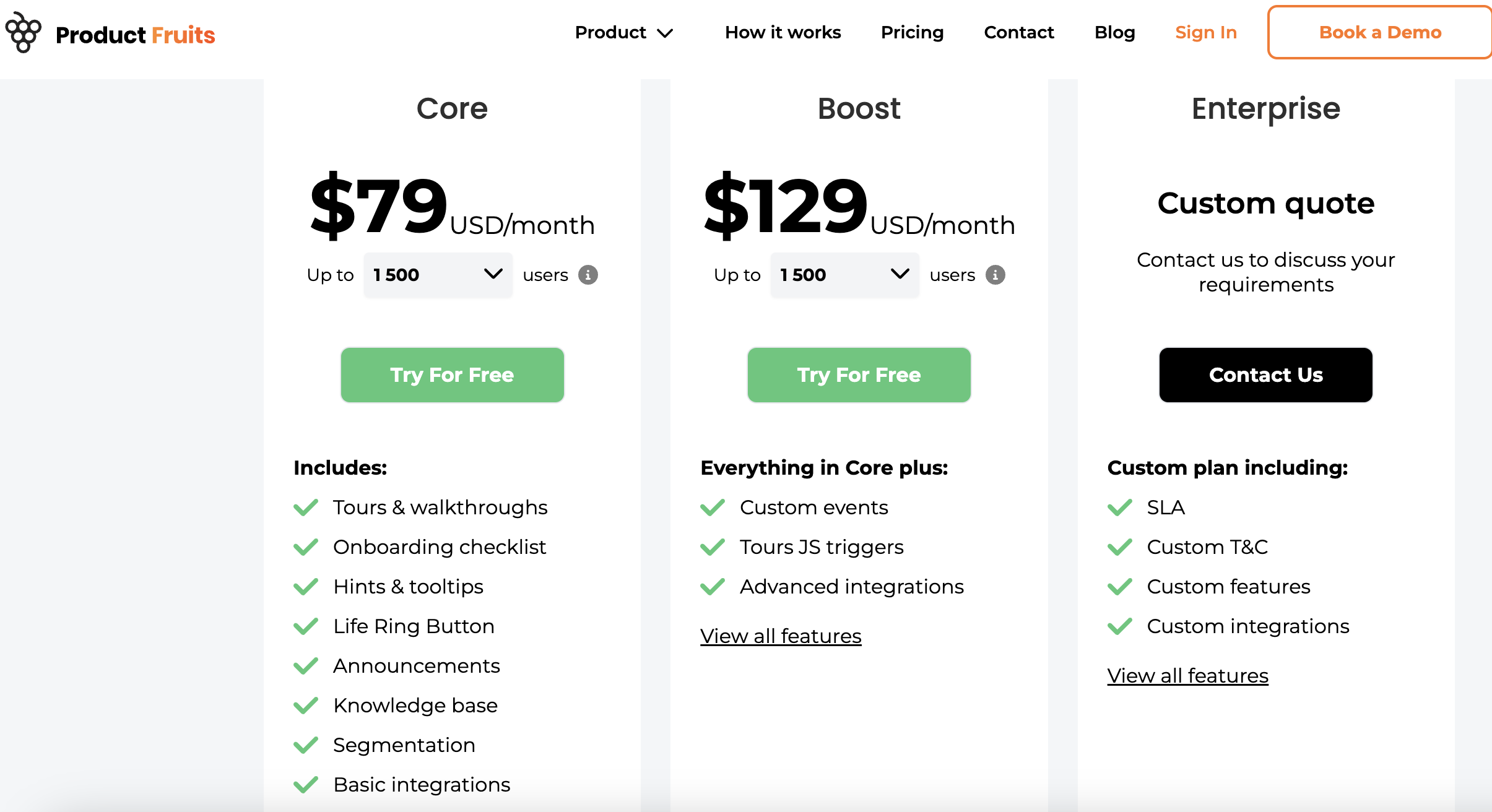
ProductFruits pricing
Product Fruits is one of the absolutely cheapest solutions on the market, with plans:
- Core: From $79 for 1,500 users.
- Boost: $129 for 1,500 users and then $249 for up to 5000 MAUs.
- Enterprise: Custom quote only.
Userpilot pricing
Userpilot’s transparent pricing ranges from $249/month on the entry-level end to an Enterprise tier for larger companies.
Furthermore, Userpilot’s entry-level plan includes access to all UI patterns and should include everything that most mid-market SaaS businesses need to get started.

Userpilot has three paid plans to choose from:
- Starter: The entry-level Starter plan starts at $249/month and includes features like segmentation, product analytics, reporting, user engagement, NPS feedback, and customization.
- Growth: The Growth plan starts at $749/month and includes features like resource centers, advanced event-based triggers, unlimited feature tagging, AI-powered content localization, EU hosting options, and a dedicated customer success manager.
- Enterprise: The Enterprise plan uses custom pricing and includes all the features from Starter + Growth plus custom roles/permissions, access to premium integrations, priority support, custom contract, SLA, SAML SSO, activity logs, security audit, and compliance (SOC 2/GDPR).
What do users say about Apty, ProductFruits & Userpilot?
Now let’s consider user reviews for a better understanding of how these products meet customer needs and exceed their expectations.
Apty reviews
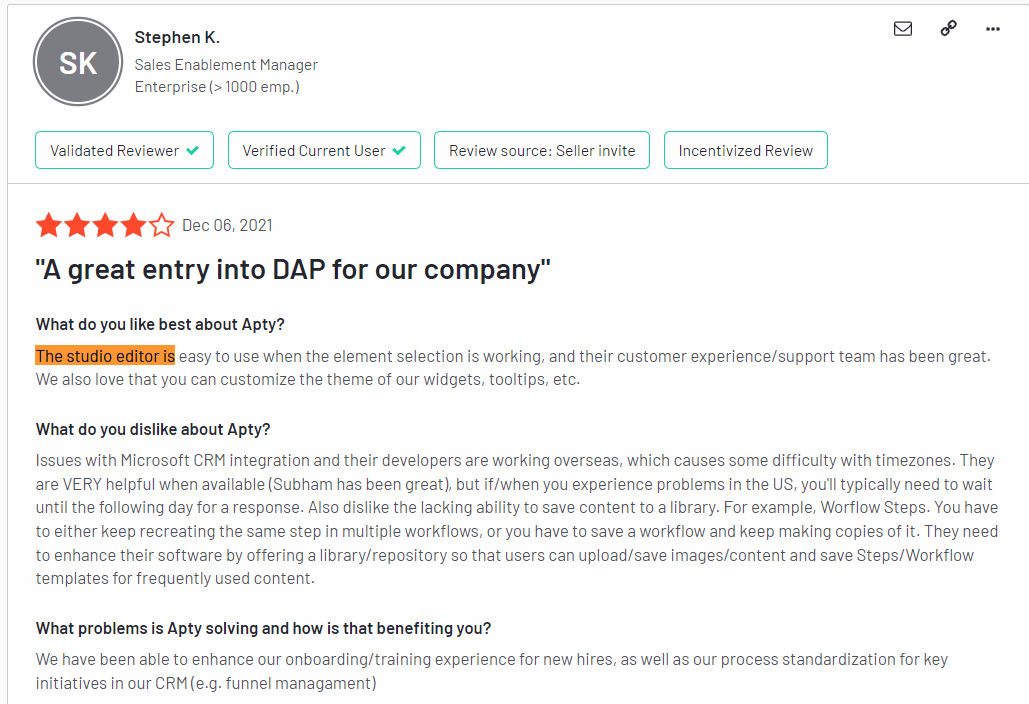
Apty review
ProductFruits reviews


Userpilot reviews

Userpilot review
Pros & Cons of Apty, ProductFruits, and Userpilot
Apty pros
Apty is a robust tool for your employee onboarding and adoption needs. Here are the main pros to consider if you’re still deciding:
- Apty is excellent for employee adoption, training, and onboarding. The tool makes it easy to develop in-app guidance for your new starters.
- You can either build different user segments inside the product, or you can integrate your Apty account with other tools and import your data.
Apty cons
While Apty is a great tool, the main downsides are the cost and restrictions you get with it. Here are the main cons of the tool:
- Apty offers tooltips and checklists for building product experience flows, but unlike other similar tools, it lacks some important UI patterns such as modals, hotspots, banners, and slideouts.
- One of the biggest disadvantages of Apty is the absence of in-app customer feedback collection. You are kind of limited to embedding surveys built using other tools.
- Doesn’t offer self-service support like a help center where users can access multiple guides and tutorials or contact support. It does provide guides that are similar but more restricted.
ProductFruits pros
ProductFruit’s most commonly quoted pros include:
- The responsiveness of the CS team.
- Easy setup.
- Easy to build product tours with a Chrome Extension directly on top of your product.
ProductFruits cons
There are several downsides to ProductFruits though:
- Only basic, linear product tours.
- Clunky UX – making it quite difficult to use.
- Only basic form of a resource center and checklists.
- No NPS.
- No native surveys.
- No reporting for the Resource Center (“life ring widget”).
- The product tour triggering can be quite buggy.
Userpilot pros
Userpilot has a number of advantages, especially for mid-market SaaS companies looking for a robust but at the same time very easy-to-use, no-code tool for user onboarding, product adoption, and simplified product analytics. Let’s have a look at the pros of using Userpilot:
- No-code builder – Userpilot comes with an easy-to-use Chrome Extension builder.
- Multiple UI patterns – choose from a range of options to build customized flows: modals, slideouts, banners, tooltips, hotspots, and checklists are all at your disposal
- UI patterns are not limited by plan – you get access to all of them on every single plan, meaning you get value even with the Traction plan (this is the entry-level one).
- Engaging walkthroughs and onboarding flows- build interactive walkthroughs targeted to distinct user segments.
- In-app help – build a resource center offering self-service support to your users, customize it with your branding, and select from a range of help options to boost user satisfaction (i.e. videos, in-app flows, chat, and more).
- Experimentation – built-in A/B testing for flows lets you explore and quickly iterate based on direct user behavior.
- Powerful feedback options- integrated NPS surveys with analytics and response tagging unlock insight into how your users feel.
- Advanced analytics and segmentation- analyze product usage and in-app flow engagement and build user segments using the data.
- Event tracking and feature tags- tag UI engagement (clicks, form fills, hovers) and group them into one custom event to track what really matters.
- More value with integrations- unlock value faster with built-in integrations with popular tools like Segment, Amplitude, Mixpanel, Kissmetrics, Intercom, Heap, and more.
Userpilot cons
There are, however, some downsides to Userpilot as well:
- Browser/web app only – Userpilot won’t run on mobile devices/applications.
- Doesn’t support employee onboarding- The tool is better suited for customer onboarding than for employee onboarding as you can’t build in-app guides on third-party tools.
- Missing integrations – doesn’t have built-in integrations with some tools, but it has webhooks, and Hubspot and Zapier are coming soon.
- Not appropriate for small startups on a shoestring budget (<$100)- Userpilot is a powerful, mid-market to enterprise-level tool. So $249 a month might be too expensive for really small startups.
![]()
Try the best tool for user onboarding!

Conclusion
In this post, we’ve discussed how Apty, ProductFruits, and Userpilot compare when it comes to user onboarding, product adoption, and user feedback.
We’ve discussed their features for each use case, pricing, and reviews, as well as the pros and cons. Hopefully, you’ve found these detailed descriptions helpful. Obviously, we’re a little biased, but we think that Userpilot offers the best value for money, and is unrivaled especially when it comes to user onboarding.
Hopefully, you’d like to give Userpilot a chance – see you in the demo soon!

